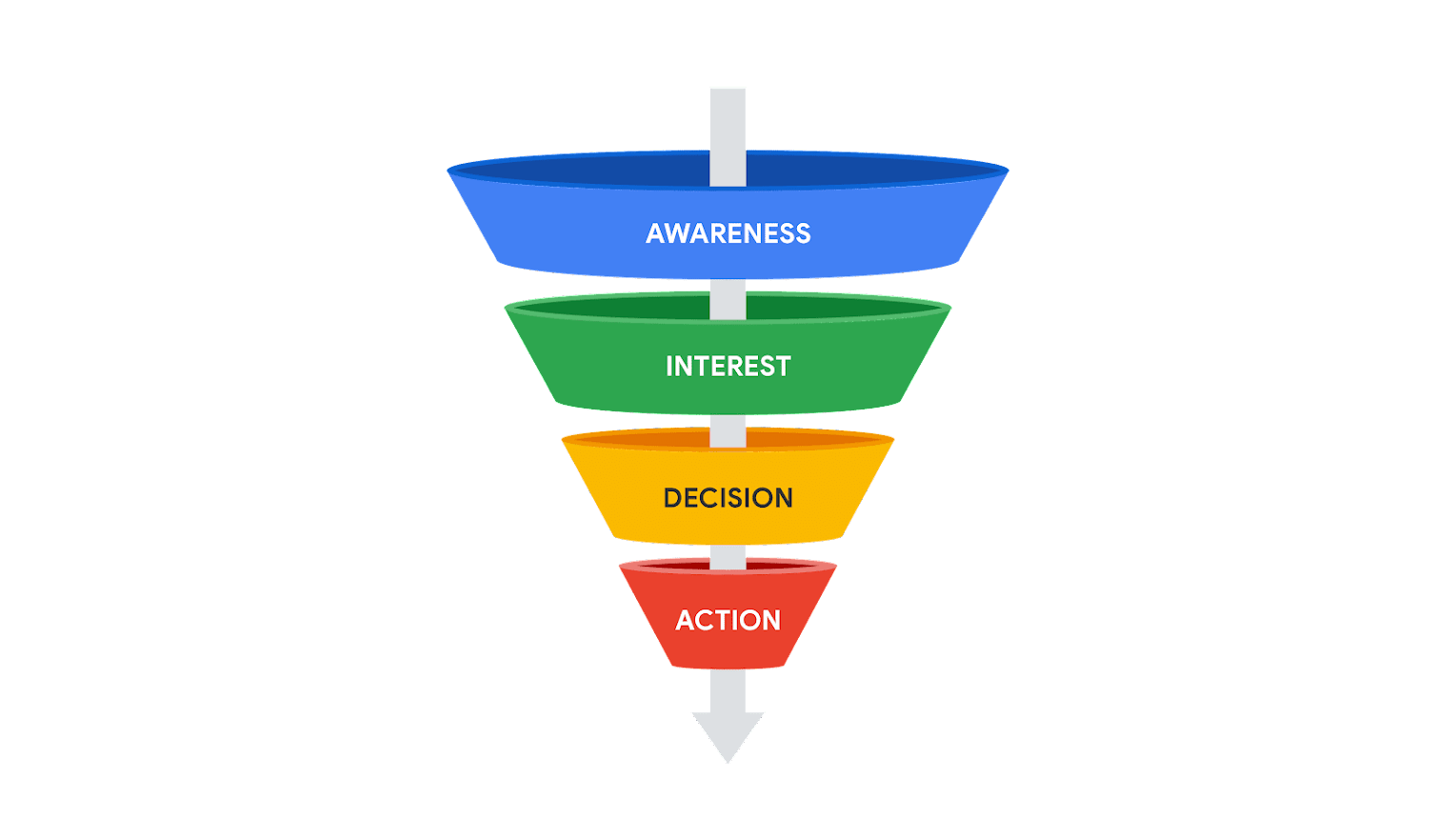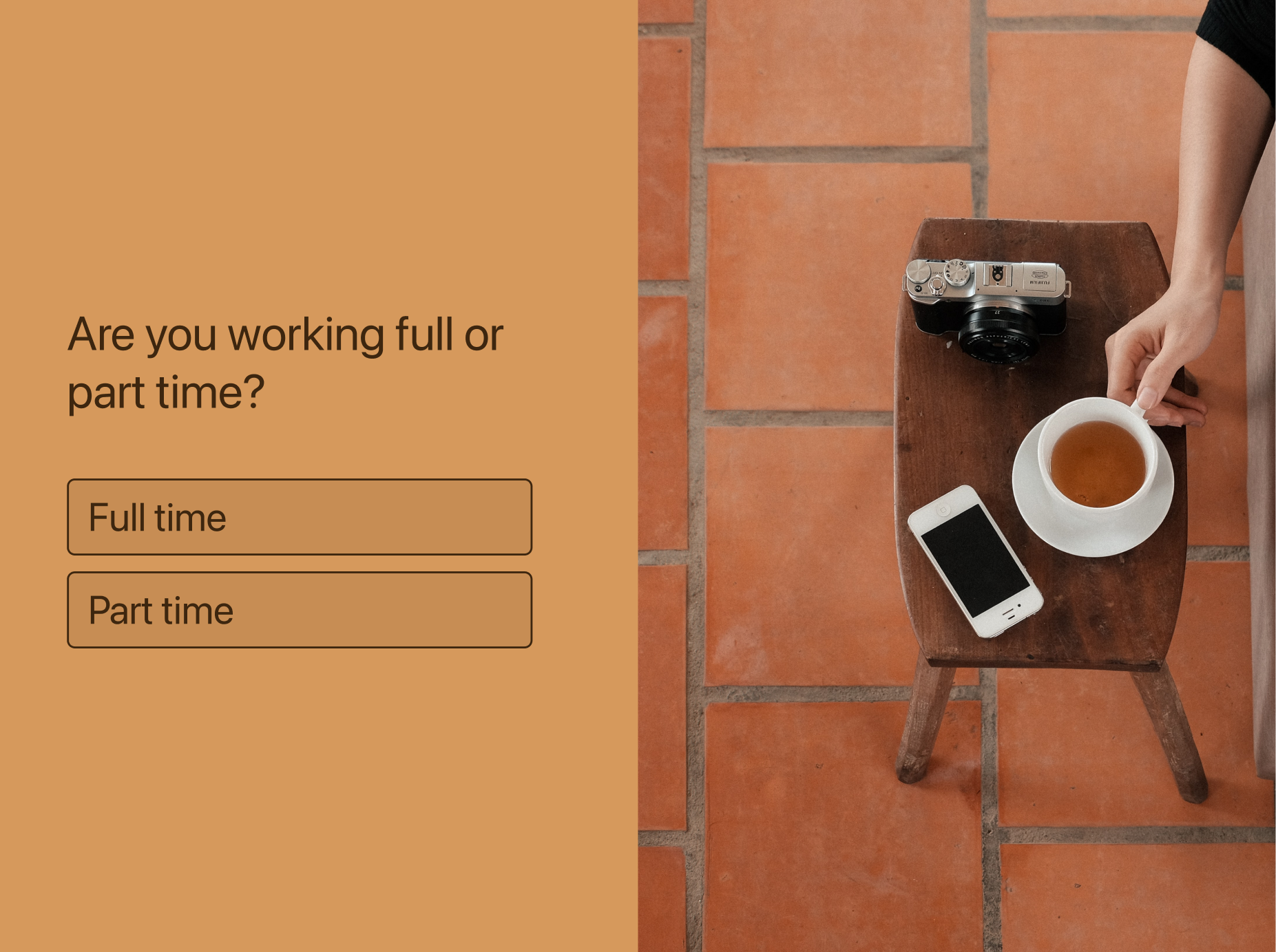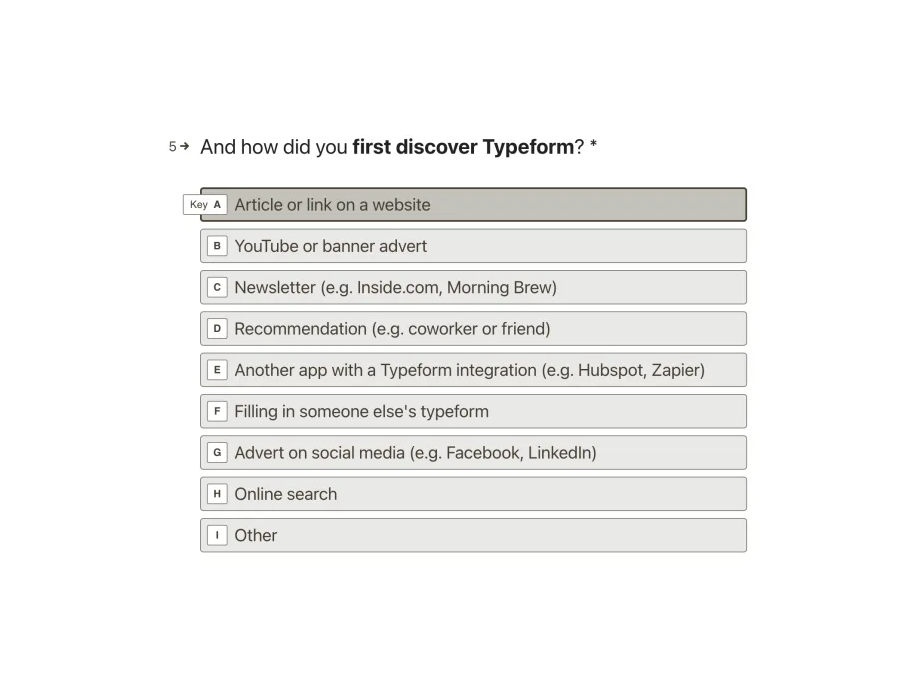Opinions and Expertise
Unlocking insights: The best questions to ask your customers
Discover the power of asking the right questions to understand customer needs and preferences. Learn how to ask the right questions, connect with your audience, and supercharge your products and services using valuable customer feedback.

We' ve all been there. We' ve sent a text—a simple question—to a friend and somehow it' s been misunderstood. Communication via text is more than just the words we write. There' s so much implied tone and coded language to sift through.
You asked, " what sounds good for dinner?"
Your friend' s (or worse, your date' s) response, " anything, I don' t really care."
Woof. Are they no longer interested in seeing you? Do they genuinely not have a preference? There are endless ways to read a simple text. It' s difficult to decide if they genuinely don' t have a preference or if they' re hoping their ambivalence shines through and you find an excuse to cancel.
The importance of asking your customers the right questions
This is where taking a moment to think about how you' re phrasing your question and what type of question you' re asking.
All too often we ask our customers questions that fundamentally won' t get us the information we' re after. A " yes or no" question about whether someone is interested in the service you offer won' t give you anywhere near the amount of insight as using an opinion scale. When faced with selecting 100% or 0% interest in say, a new roof, a customer who selects " no" might actually rate themselves a 4 out of 10 for interest. Maybe they don' t need a new roof right now, but in two years, it' s something that' ll be top of mind.
Not sure what kind of question to ask? Start by deciding if you need to collect qualitative or quantitative data.
Effective questioning can crack open customer insights, give you better information for more accurate lead qualification, and provide more guidance for improving your product or service.
The best questions to ask your customers
We get it, there seem to be endless types of questions to ask. So how exactly do you know when to ask customers open-ended questions or closed questions, or whether you use a ranking or a rating scale? This comes down to understanding what you hope to get out of the answer. The best survey questions to ask your customers are the ones that' ll get you the results and insights you want.
1: Types of questions to ask
Open-ended questions:
Open up a conversation with this type of question. These are good survey questions to get more honest and complete answers, since people have the opportunity to give you more feedback. If you' re looking for a yes/no answer—you' ll need to use a closed-end question.
Open-ended question examples:
- What are you wearing today?
- How did you meet your best friend?
- What is it like to live in Barcelona?
Probing questions
A probing question is a very useful type of open-ended query that can provide insight into your customer' s experience or difficulty. Using probing questions is a technique that nudges and guides your respondant into providing you with deeper, more expansive information. These questions are designed to encourage reflection and consideration about opinions, experiences, and desires.
Probing question examples:
- Can you be more specific?
- Why' d you choose ___?
- What issues are you looking to solve?
Closed-ended questions
Closed-ended questions are the opposite of open-ended questions. They don' t allow for tailored responses. Instead, they require specific answers like " yes" or " no" . While you don' t get nearly as much personal information, you can strategically leverage them to quickly gain customer insights.
Closed-ended question examples:
- Do you need help with ___?
- Is this a priority for you?
- Would you pay for this service?
Funneling questions
Funneling questions are used to narrow down customer responses to determine the most important points. They' re a key component of an effective survey strategy. Generally, you' ll start by asking general, easy questions, and then hone in on an aspect in the questioning that you' re interested in. Most often you' ll start with open-ended questions, then probing questions, and you' ll finish with closed-ended questions.
2: Customer profiling questions
Customer profiling questions allow companies to develop a comprehensive view of the customer. This profile can help better understand customer needs and allow you to create segments and like-audiences.
Demographic questions.
Demographic questions are used to identify characteristics such as age, gender, location, and income. These are factual and often make up the first layer of segmentation.
Demographic question examples:
- What' s your age bracket?
- What' s your zip code?
- What' s your income level?
Psychographic questions
The questions asked during the psychographic assessment are used to determine customer attitudes, interests, and lifestyle. This information is used to target marketing campaigns and products.
Psychographic question examples:
- Which of the following features are most important to you?
- What encouraged you to buy [x product]?
- How much time did you spend researching [x] before making a purchase?
Behavioral questions
When you want to understand why someone is behaving a certain way, you' ll likely use a behavioral question. These questions also seek to uncover more about what customers expect from products and situations.
You might try asking:
- How often do you purchase X online?
- Do you tend to stick with one brand or do you try different options?
- How often do you read online reviews before making a purchase?
3: Product/Service Feedback Questions
Questions asking for product or service feedback range from asking customers what features or aspects they find most valuable and what improvements or enhancements they' d like to see, to how your product or service compares to competitors.
Some commonly used product or service feedback questions to lean on are:
- What features or aspects do you find most valuable?
- What improvements or enhancements would you like to see?
- How does our product/service compare to competitors?
4: Customer Experience Questions
Questions to understand customer experience include asking customers how they first heard about the company and what made them choose the product or service. You could also ask them what could be done to enhance the overall experience.
Try using the following questions to better understand your customers' experiences:
- How did you first hear about us?
- What made you choose our product/service?
- Is there anything we could do to enhance your experience?
5: Pain Point and Challenge Questions:
While pain-point questions do ask about aspects of the customer experience, they' re specifically designed to pull detailed information about a what isn' t going well for a customer. These questions can be applied to both product and service experiences. Use the feedback from pain-point and challenge questions to drive improvements to workflows, develop product roadmaps, and inform education experiences.
To learn more about your customers' challenges, try:
- What is the biggest challenge you face in your business?
- How do our products/services help…?
Future Expectations Questions:
Questions related to future expectations can range from asking customers how the company can improve, what new features or services they would like to see, or how the customer' s needs may change in the future. Future expectations questions are another way to gain valuable insight for future updates, products, or services.
Future expectation questions:
- How do you think your needs will change in the future…?
- How can we improve…?
Tips for Effective Questioning:
Our first tip for effective questioning is, it shouldn' t feel like questioning. The language and tone you choose to ask your audience questions is key. Remain conversational, use easy-to-understand concepts, and strive for inclusive language.
It' s also important to keep questions clear, concise, and relevant. Keep your questions focused and clearly connected. It' s confusing for respondants if you start by asking about their thoughts on their product trial and then switch to asking about their last vacation. If you have a reason for changing directions in your survey, be sure to introduce it.
Lastly, keep your questions as short as is reasonable. You should let your customers do the talking and responding. This includes both your questions and your survey overall. Both should be concise! If you find yourself wondering if either are too long, chances are you already have the answer. (Ever hear the saying, if there' s doubt, there is none? That applies here).
Analyzing and Utilizing Customer Feedback:
Organizing and categorizing the feedback from your surveys is a key method for identifying trends and patterns in customer responses. By connecting your form builder to tools such as Google Sheets, Zapier, or Mailchimp you can automatically sort different categories of responses and sentiments.
Read more about our favorite Typeform integrations to power up your workflows.
Implementing customer feedback is also the surest way you' ll be making necessary changes to their experience. Who better to ask than the customer themselves? But, before changing everything about your customer experience, see if you can validate feedback with A/B testing or additional customer interviews. It' s not uncommon for customer feedback to differ from customer behavior. This doesn' t mean that direct customer feedback isn' t useful, it just means we need to take a few extra steps to validate that feedback.
Asking the right questions to customers is essential for understanding their needs and preferences. With the right tools, like forms, surveys, and quizzes, businesses can collect and analyze customer data to make data-driven improvements to their products and services.






.png)
.png)